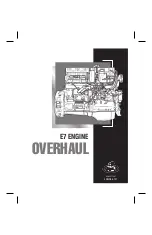
7
minus 0.1% accuracy. Use the strobe disc provided
to set the speed (instructions are on the card).
However if you have problems using the strobe
card, then count the rpm using the following
method. Counting the 33.3 revs per minute is best
accomplished by placing a small piece of sticky
tape on the perimeter of the platter and then
counting 100 revolutions. 33.3 rpm is exactly 100
revolutions completed in 3 minutes. To save time
in the early stages it is easiest to count 50 revs in 1
minute 30 seconds (or 25 revs in 45 seconds)
and save the 100 count for the final check.
Please note the following points when setting
the speed.
Firstly all the figures below are based
on setting the speed on the deck using the
centre track and letting the deck play for a good 5
minutes beforehand with the stylus on the record
so that the whole system has settled down. The
regulators seem to take about 5 minutes to warm
up, so speed is about 2mins 58 seconds for 100
revolutions when the system starts from cold.
In other words it is 2/180 x 100 = 1 % fast when
started from cold. Speed variation with the DC
motor varies minutely depending on the track
played and cut of record.
Click the rotary switch to the 2nd click clockwise
and set P2 so that the platter rotates at 45 or 78
rpm (if you wish) using the same procedure as
outlined above. The DC motors emit a slight noise
to begin with and are never completely silent in
comparison to a/c motors. This is due to their
precious metal brushes. Having said this they still
sound a great deal better in performance terms.
Allow approx a 4 hours running in period then
reset the motor speed. The motor should then be
run for approx 2 days under load (i.e. turning the
platter) to free it up from vibration and to “bed in”
the bearings.
Like most other turntable manufacturers we
recommend that you leave the turntable running
between changing records as this reduces the
belt wear that occurs with constant stopping
and starting.
Note A: Do not use the power supply for anything
other than the DC motor or the power supply
may be irreparably damaged and you could also
damage the equipment you are plugging it into.
Note B: The circuit will take around 8 hours to run
in and sound its best.




























